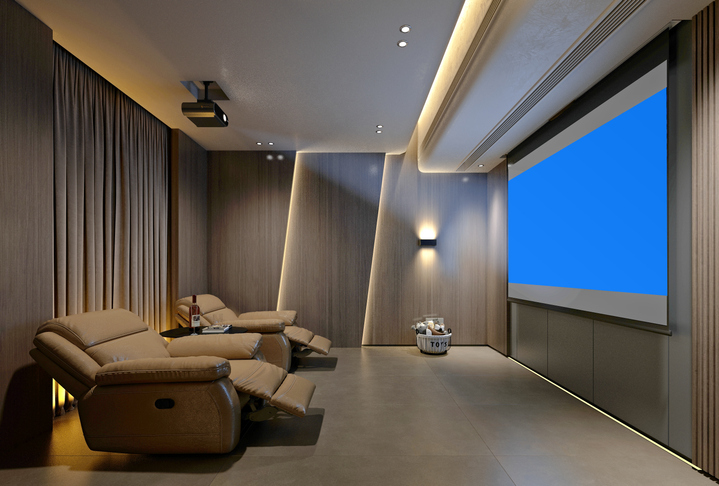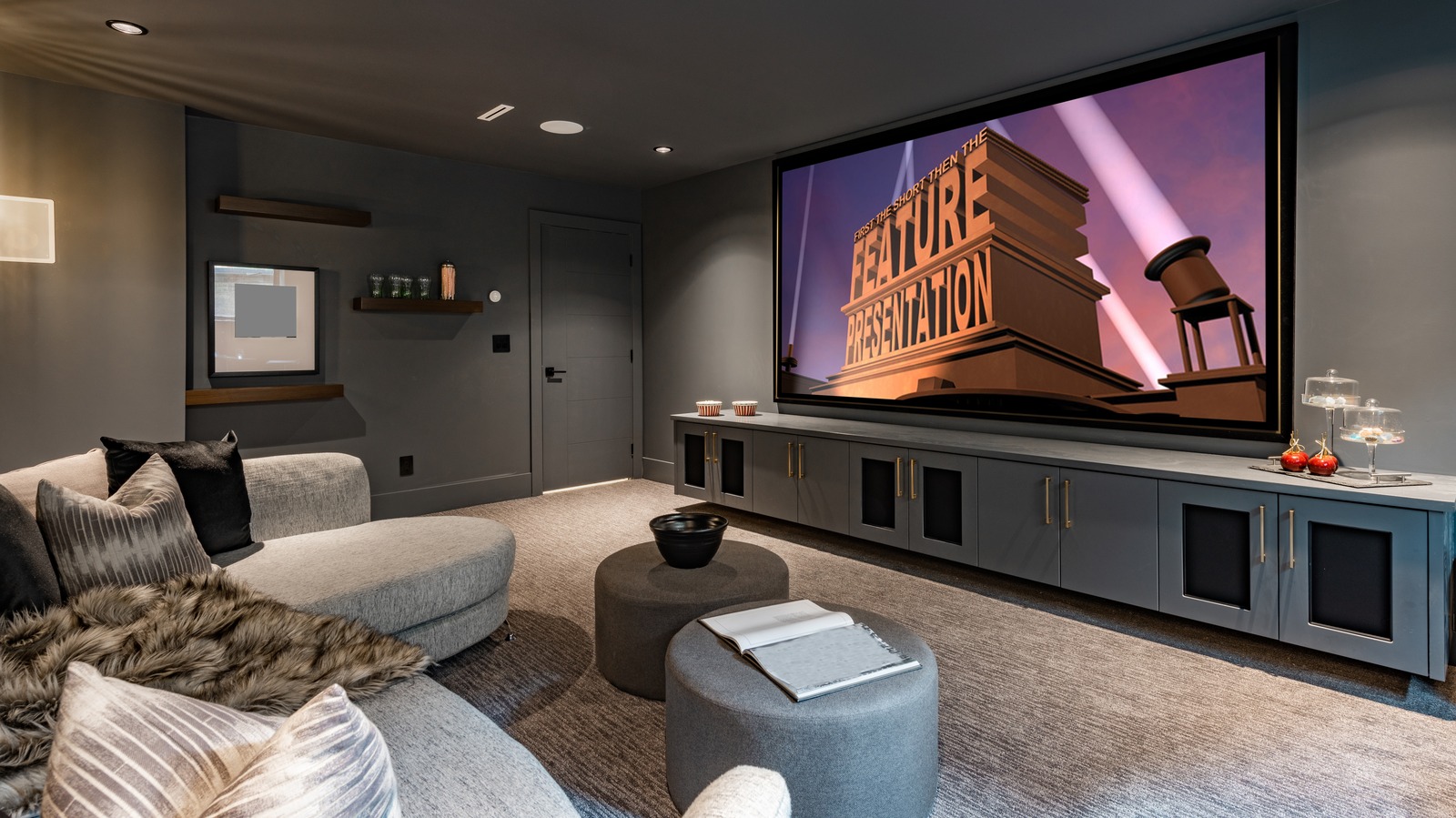Home Theater Tampa: Bringing Movie Theater Experiences Right to Your Door
Wiki Article
Home Theater 101: Every Little Thing You Required to Know for a Cinematic Experience at Home
Developing a home theater that rivals the cinematic experience of an industrial theater includes careful consideration of several components, including screen choice, audio systems, and room format. Each element plays an essential duty in achieving the wanted setting and performance. Whether you are contemplating the optimal screen size or the complexities of border sound, comprehending these basics is essential. As we discover these critical components, it ends up being noticeable that the selections made can dramatically affect your total watching experience, leaving one to ponder just how these decisions will form your personal cinema.Choosing the Right Screen
When establishing up a home cinema, selecting the right display can make or break the watching experience - home theater installation tampa. The display acts as the centerpiece of your setup, influencing photo high quality, checking out angles, and total aesthetic. Secret aspects to think about include screen resolution, kind, and sizeFirst, figure out the appropriate display dimension based on your area measurements and seating distance. Next, select in between numerous screen kinds, such as fixed-frame, mechanized, or retractable displays, each offering distinctive advantages.
Resolution is another essential aspect. For a really immersive experience, consider a display made for 4K or perhaps 8K material, making certain sharpness and quality. Furthermore, consider the screen's gain, which impacts illumination and contrast; a greater gain can improve illumination in well-lit spaces, while a lower gain may be better for darker atmospheres.
Selecting Audio Equipment
Audio equipment is a critical element of any kind of home theater system, dramatically improving the total viewing experience. The selection of audio gear can determine the deepness, clearness, and immersion of audio, vital for developing a cinematic atmosphere.When picking audio tools, consider a surround sound system, which commonly includes a receiver, numerous speakers, and a subwoofer. A 5.1 or 7.1 network system is advised, where the first number represents the audio speakers and the second the subwoofer, giving an immersive soundscape. The receiver is the heart of the system, managing sound and video signals, and must sustain modern formats like Dolby Atmos for a boosted spatial experience.
Quality audio speakers are crucial; search for versions that use a balanced sound account with good bass feedback. Floor-standing speakers can produce richer noise, while shelf choices conserve area. In addition, consider cordless alternatives for convenience of installation, although wired systems usually deliver remarkable performance.

Optimum Seating Plans
Developing an ideal home movie theater experience pivots dramatically on optimum seating plans. The arrangement of seats plays an important role in both comfort and seeing top quality, straight affecting the overall cinematic experience.First, consider the display size and seeing range. A common standard is to position seats at a distance about 1.5 to 2.5 times the diagonal size of the screen. This makes sure an immersive experience without straining the eyes.
Next, elevation is important. The back rows should be higher than the front to stay clear of obstructions if your seating is in a tiered layout. For flat seating, guarantee that the front row is not as well close to the display, which everybody has a clear line of vision.
Moreover, consider the setup in terms of social dynamics. Team seats can enhance the public experience, while individual seats may be liked for individual viewing.

Last but not least, focus on comfort with ergonomic seating that sustains extended viewing periods. Incorporating recliner chairs or supported seats can significantly improve the experience, making the home theater a favored location for both amusement and relaxation.
Lighting and Ambiance
Effective illumination and setting are necessary components of a properly designed home cinema, as they considerably affect the viewing experience. The best illumination can improve the cinematic feel, while poor choices can take away from it. For ideal outcomes, think about a layered lights method that includes ambient, job, and accent lighting.Ambient lighting gives basic lighting, guaranteeing that the area is not entirely dark, which can stress the eyes. Dimmer buttons are very suggested, enabling for modifications based upon the web content being viewed. Task illumination, such as wall surface sconces or floor lights, uses useful illumination for tasks like analysis or browsing the area without interfering with the general ambience.
Accent lights can be made use of to highlight architectural functions or create centerpieces, adding depth and rate of interest tampa home theater installation to the room. LED strip lights behind displays or along shelves can give a refined radiance that boosts the visual experience without frustrating the viewer.

Wiring and Installation Tips
A well-planned wiring arrangement is essential for achieving ideal efficiency in your house movie theater system. Appropriate circuitry not only ensures top quality sound and video signals but likewise improves the overall aesthetic of your room. Begin by mapping out your design, identifying where each component will be put, including your display, speakers, and receiver.When selecting cords, prioritize top quality, properly determined wiring to reduce signal loss. HDMI cords ought to be used for video clip links, while audio speaker cable must match the specs of your speakers and amplifier. Select in-wall ranked wires to adhere to security standards and keep a tidy appearance.
Final Thought
In recap, producing an exceptional home theater experience requires careful consideration of different components, including screen choice, audio tools, seating arrangements, lights, and electrical wiring. Each component plays an important role in accomplishing optimum efficiency and ambiance, ultimately enhancing the satisfaction of home enjoyment. By prioritizing these factors, a motion picture atmosphere can be efficiently reproduced, enabling immersive viewing experiences that measure up to traditional cinema setups. Interest to information in each location is vital for general satisfaction.Creating a home cinema that rivals the motion picture experience of a commercial theater involves mindful factor to consider of numerous components, consisting of display choice, audio systems, and room format.When establishing up a home movie theater, selecting the appropriate display can make or break the seeing experience. Next, pick in between different display kinds, such as fixed-frame, mechanized, or retractable screens, each offering unique benefits. For a really immersive experience, think about a screen developed for 4K or also 8K material, making certain intensity and clearness.In recap, developing a phenomenal home cinema experience needs cautious consideration of various components, consisting of display option, audio tools, seating setups, illumination, and circuitry.
Report this wiki page